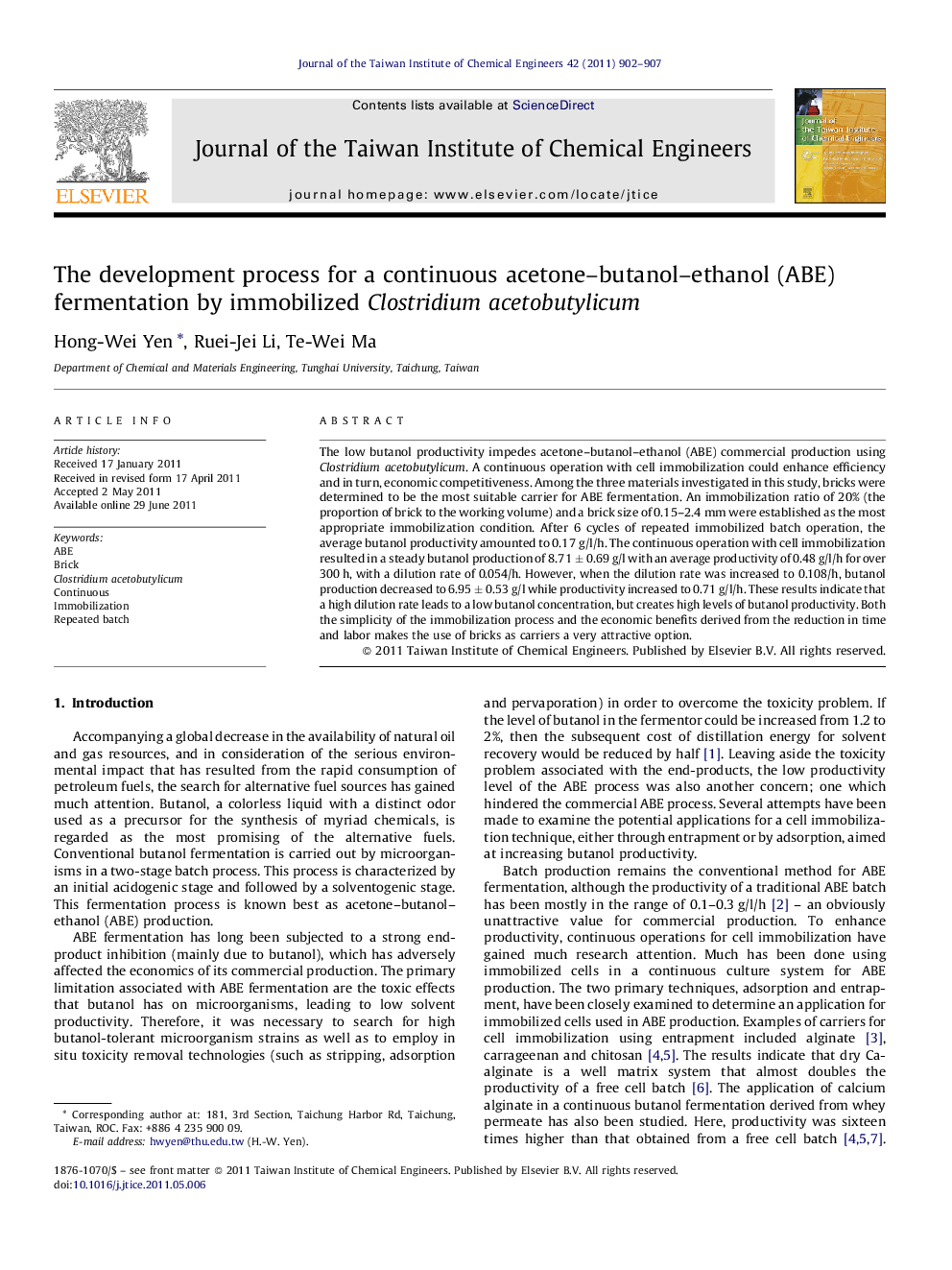| کد مقاله | کد نشریه | سال انتشار | مقاله انگلیسی | نسخه تمام متن |
|---|---|---|---|---|
| 691628 | 1460447 | 2011 | 6 صفحه PDF | دانلود رایگان |

The low butanol productivity impedes acetone–butanol–ethanol (ABE) commercial production using Clostridium acetobutylicum. A continuous operation with cell immobilization could enhance efficiency and in turn, economic competitiveness. Among the three materials investigated in this study, bricks were determined to be the most suitable carrier for ABE fermentation. An immobilization ratio of 20% (the proportion of brick to the working volume) and a brick size of 0.15–2.4 mm were established as the most appropriate immobilization condition. After 6 cycles of repeated immobilized batch operation, the average butanol productivity amounted to 0.17 g/l/h. The continuous operation with cell immobilization resulted in a steady butanol production of 8.71 ± 0.69 g/l with an average productivity of 0.48 g/l/h for over 300 h, with a dilution rate of 0.054/h. However, when the dilution rate was increased to 0.108/h, butanol production decreased to 6.95 ± 0.53 g/l while productivity increased to 0.71 g/l/h. These results indicate that a high dilution rate leads to a low butanol concentration, but creates high levels of butanol productivity. Both the simplicity of the immobilization process and the economic benefits derived from the reduction in time and labor makes the use of bricks as carriers a very attractive option.
Journal: Journal of the Taiwan Institute of Chemical Engineers - Volume 42, Issue 6, November 2011, Pages 902–907